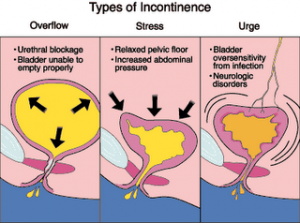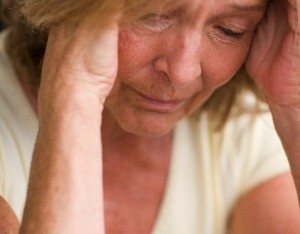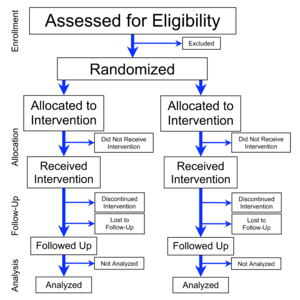Modern Western Medicine tends to see the disease of a patient as a unique entity. Conventional medicine behaves as if a disease is associated with characteristic symptoms, findings and lab test results, which are then treated in a standard fashion by treating the symptoms of the disease.
The reality though is different: The same disease can present in various patients with different symptoms.
Naturopathic physicians, integrative physicians and anti-aging physicians see patients as unique individuals with characteristic personality traits and slightly varied presentations, which may be shared in a disease entity, but differ substantially from person to person.
It is important to be aware of this uniqueness, if the caregiver wants to achieve the optimal treatment result.
Big Pharma does not like this approach as they would like you to think that the conventional medicine system is superior. A certain disease is treated a certain way, preferably with the most expensive drugs.
I thought that in this blog it would be good to shed some light on this important topic.
Menopausal women with symptoms
Let us consider an example of a 55-year old woman who has hot flashes, dry skin, a loss of hair from the outer aspect of her eyebrows, does not sleep well and has lost her sex drive. She also has put on 20 pounds in the last year despite no change in her diet.
This is how conventional medicine would handle this patient
The doctor examines the woman and does a Pap test as well. A conventional doctor would likely order standard blood tests consisting of a complete blood count, thyroid tests (T4, TSH) and FSH and LH levels. The conventional physician would find that the thyroid hormones are low with a high TSH (thyroid stimulating hormone) and would treat the woman with Synthroid (a synthetic thyroid hormone drug). The LH and FSH were found to be high indicating to the conventional physician that the woman is in menopause. He would offer the standard PREMPRO (a synthetic hormone preparation containing a mare estrogen combination with a progestin) with the warning that he will give her the lowest estrogen combination and only up to 5 years because of the negative findings of the Women’s Health Initiative.
Here is an example how a naturopathic or anti-aging physician’s would investigate and treat the patient
A naturopathic physician or an anti-aging physician would likely add a female saliva hormone panel to the other blood tests mentioned above and also do a T3 hormone level as part of the thyroid blood tests. The doctor will explain to the patient that she was found to be menopausal and also hypothyroid. With respect to the hypothyroidism the physician will explain that apart from thyroxin (T4) there is a second hormone, triiodothyronine (T3) that is also necessary in order to replace all of the thyroid hormones that humans have. Drug companies assume that T4 (Synthroid) will reverse automatically into whatever amount of T3 the body needs, so they have convinced most conventional doctors to prescribe T4 drugs only (like Synthroid). The problem is that as the body ages, the enzymes necessary to convert T4 into T3 do not work as well as in a younger age.This can be verified by testing T3 and T4 levels simultaneously.
The end result is that the patient who only gets T4 replaced may still have some of the symptoms like lack of energy and depression even when T4 has been replaced. Not so with the patient treated by the naturopath or the anti-aging physician who put our patient on Armour (porcine-derived thyroid hormone replacement containing both T4 and T3).
With regard to the blood tests and the saliva hormone tests the second patient was told that the blood tests confirmed menopause (high LH and FSH) and that the saliva female hormone panel showed what was going on. In this particular patient the female saliva hormone tests showed that the progesterone level was low, the testosterone level was low and estrogen was normal. Another hormone, DHEA-S (which is DHEA sulfate, the storage form of DHEA) was also on the low side. Cortisol that had also been tested was normal. The physician explained that the woman’s adrenal glands showed a slight weakness not producing enough DHEA, which is a precursor to testosterone. The low testosterone level was responsible for her lack of sex drive. Progesterone, which needs to be high enough to counterbalance estrogen, was missing, which was likely the cause of her hot flashes and the lack of energy together with the missing thyroid hormones. The physician explained that the woman needed a small amount of DHEA tablets by mouth, a full replacement of progesterone (through the use of a bioidentical hormone cream) and also a small amount of bioidentical testosterone cream to normalize her hormones.
A reassessment of the patients 2 months later showed that the first woman still had some depression and lack of energy, while the second woman felt her normal self again. Both women had regrown their eyebrows from replacing the missing thyroid hormones and have lost several pounds since the beginning of their treatments, but obviously there were quite different clinical results. The first woman was treated in a “standard conventional medicine” fashion, which will lead to breast cancer as unnecessary estrogen was given. She also will be at risk of getting cardiovascular disease as she was replaced with Progestin, a synthetic drug thought by conventional physicians to represent “progesterone”. The Women’s Health Initiative has proven that this was the outcome with PREMPRO and yet this drug is still on the market!
The second woman received an individualized and personalized holistic treatment protocol. The low progesterone from missing her ovulations after menopause was being replaced and her body very quickly responded favorably by making her feel normal again. The missing adrenal gland hormones and testosterone were replaced and this normalized her sex drive. Both, progesterone and thyroid hormones (T3 and T4) are anabolic hormones and they gave her back her energy and restored her sleep pattern. With normal hormone levels she also lost her depression symptoms.
Two men with depression
If you thought that the difference of these two clinical approaches were just coincidental, think again. The next examples are two men in their early 50’s who see their physicians because they felt depressed and had a lack of energy. Both were normal weight.
Here is the conventional medicine approach
The physician took a history, during which a lack of sex drive was also noted. He examined the patient and came to the conclusion that physically nothing was wrong with the man, but a diagnosis of depression was made. This would account for the tearfulness, sleep problems and loss of sex drive. The doctor prescribed one of the standard antidepressants (in this case sertraline, brand name Zoloft). Three weeks later the patient returned and as he was better, a repeat prescription for the antidepressant was given. After a further two months the patient was reassessed. When the symptoms were reviewed, it became apparent that a lack of sex drive was still present, if anything the patient felt the antidepressant had made this worse. Some of the depressive symptoms have improved on the conventional antidepressant. The doctor discussed that the antidepressant could be increased by one tablet per day. The doctor also discussed the option of using Viagra for the decreased sex drive and difficulty having an orgasm.
This would be the naturopathic or anti-aging physician’s approach. Again similar to before a history was taken and a physical examination was done. The physician noted that the patient was in the age where a lack of sex drive could indicate an early andropause (the male equivalent of menopause, often difficult to spot with the first presentation). A depression questionnaire indicated that the man was moderately depressed. The patient was sent for blood tests and for saliva hormone tests (a male hormone panel). The physician stated that he would like to arrange for cognitive therapy treatment to sort out the various factors of his depression, but also help his mood by trying to start him on St. John’s wort, an herb that has been proven to be effective for mild to moderate depression. The blood work came back as normal. However, the hormone tests showed that testosterone was in the lower third of the normal range. DHEA-S, cortisol and estrogen were normal. So a few weeks later when the tests had come back the patient was called in. The doctor explained to him that the low testosterone level would explain why his sex drive had deteriorated along with his symptoms of depression. Bioidentical testosterone cream was added to the antidepressant herbal treatment. The result was that within one month this patient’s sex drive was back to normal. Together with the cognitive therapy treatments and the herbal antidepressant the depression was also resolved. After a further three months of counseling he was able to stop the St. John’s wort. Due to the counseling sessions he felt stronger than ever before and his mood remained stable even when the counseling sessions were terminated. He continued to use the bioidentical testosterone cream regularly.
These are examples of two different approaches in two identical men in their early 50’s. It appears to me that the conventional approach did a disservice to the sick person, only treated symptoms, but did nothing to solve this patient’s real problems. The second case’s depression was treated properly and the physician luckily also did not miss the underlying early andropause with low testosterone levels. Repeat testosterone levels showed a high normal testosterone level, which was now in the upper 1/3 of the normal range.
The conventional approach missed the early testosterone deficiency, which would cause heart disease, should the testosterone levels become even lower. Viagra certainly would not be the answer as this has a number of potentially serious side effects. The antidepressants at even higher doses would cause more erectile dysfunction, which was what he hoped to have treated.
Conclusion
People often have several conditions at the same time. It takes intuition, readiness to do testing, repeat close observation and repeat examination on the part of the physician. This needs to be coupled with good listening skills to sort out a patient. On behalf of the patient it is important to tell the physician all of your symptoms and observations. Be patient and never give up. A good patient/physician relationship will go a long way in sorting out complex medical problems. Every patient is unique. Not every symptom means the same thing in two different patients.
More information on:
1. Menopause: http://nethealthbook.com/hormones/hypogonadism/secondary-hypogonadism/menopause/
2. Depression: http://nethealthbook.com/mental-illness-mental-disorders/mood-disorders/depression/
Last edited Nov. 7, 2014









